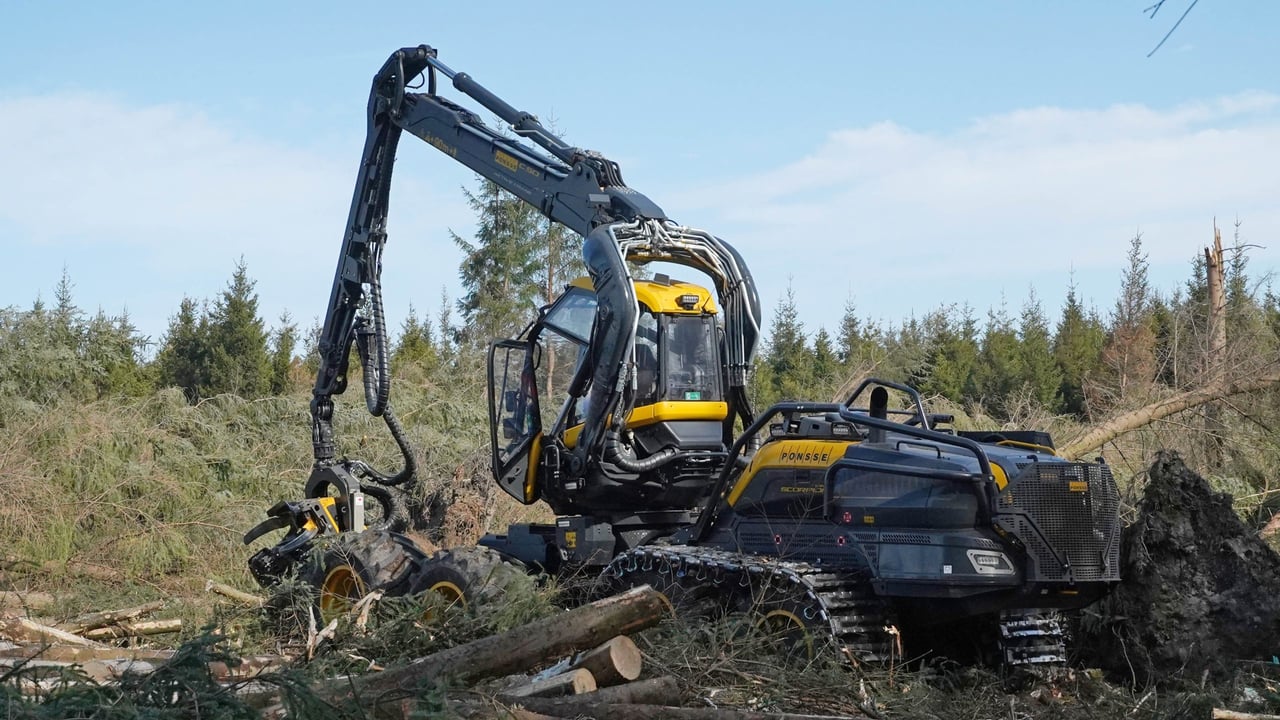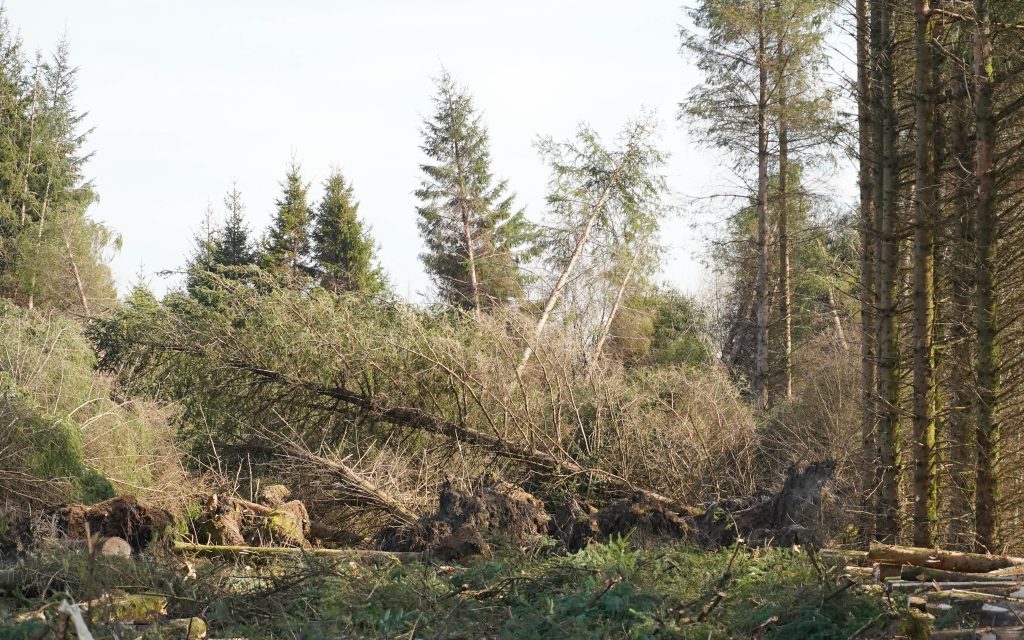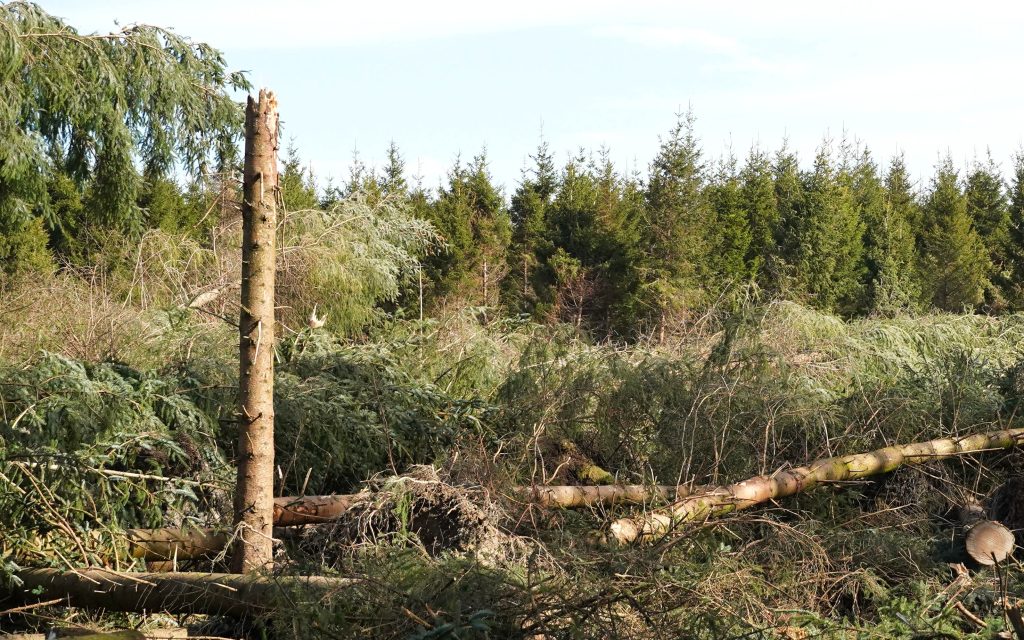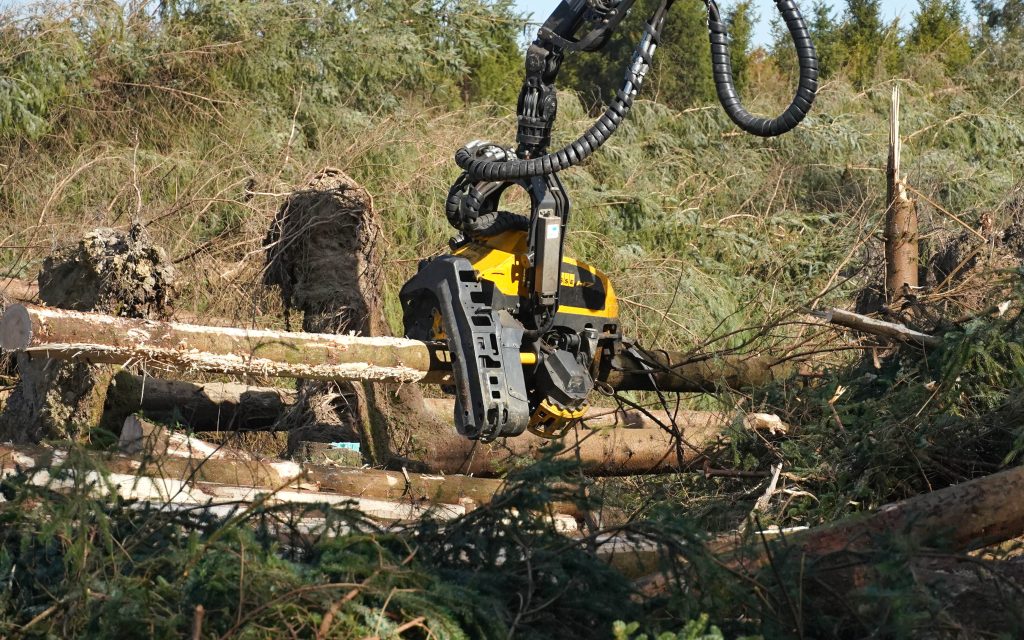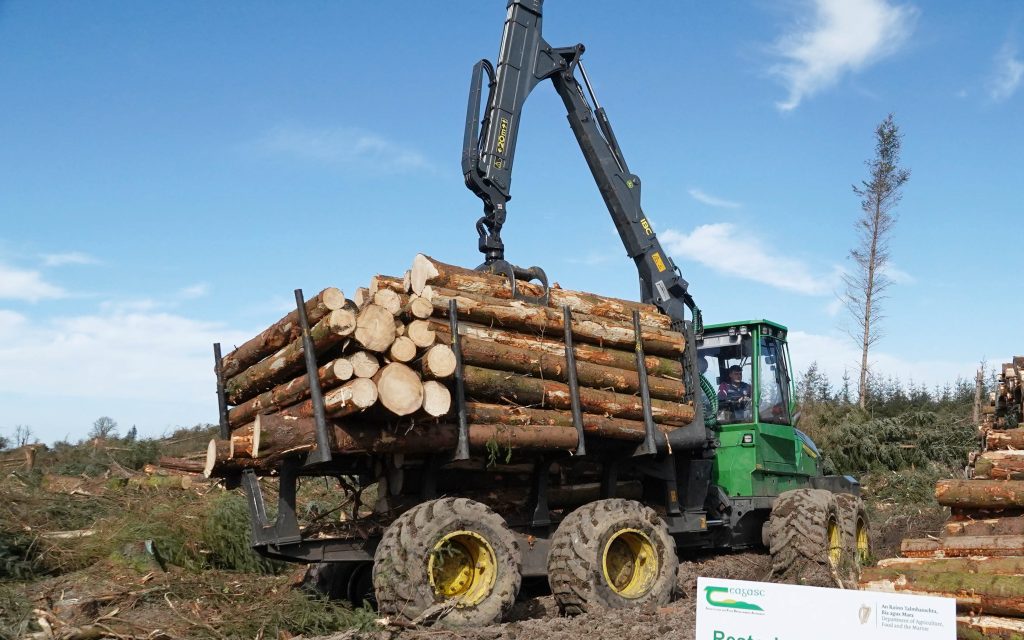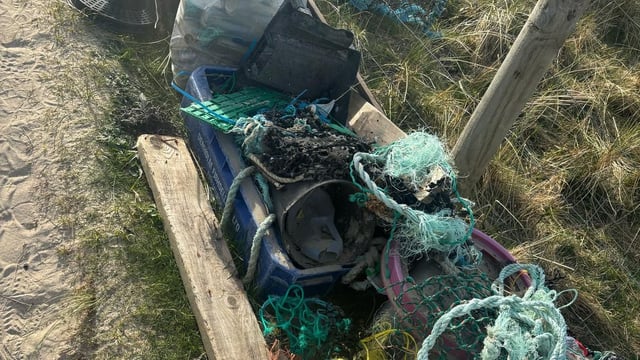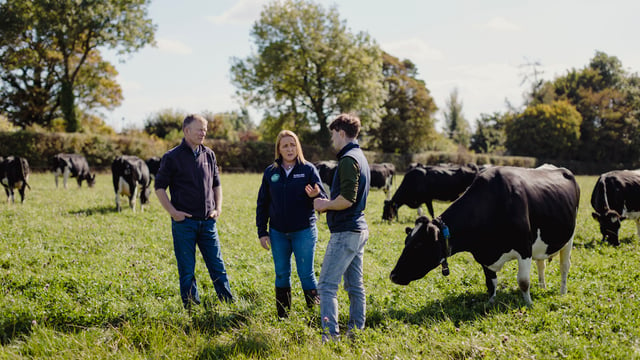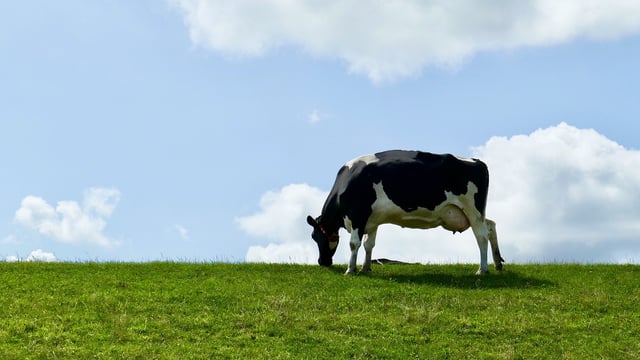Teagasc advises calm after the storm in dealing with windfall
The last winter in Ireland was marked by two fierce storms that led to a good deal of windfall in certain parts of the country, the midlands being particularly badly affected.
A broad estimate by Teagasc suggests that on a national basis, around twice the amount of timber that is manually felled per year was blown down, leaving a huge surplus of timber to be cleared away before there is any chance of normality returning to the industry.
This sudden and dramatic felling has left many questions to be answered as to its effect on timber values and how to manage the fallen crop.
Information event
Recently Teagasc held a demo day at Ballymacward, Co. Galway at which it outlined the degree of damage caused by the storms and provided guidance on how to cope with the aftermath.
Keeping a cool head and taking a long and thorough look at how much of a crop has been affected by windfall is the first piece of advice, following on from which is making a plan based on the several factors that influence all felling decisions, not just events such as this.
One of the first questions many growers ask is how long have they got before the downed timber loses value? Unfortunately, and rather predictably, the answer is 'it depends'.
There are two main ways in which windfall timber loses value in this situation, the first is through weight loss as it dries out, the second is through degradation and decay.
Window of opportunity
The rule of thumb is that if the tree blew over with its root ball intact, it continues to grow and the foliage is in contact with the ground then there there is a window of around 18 months to get it harvested, maybe longer.
Should the trunk have snapped off its stump and is lying on the ground then this period can be a lot shorter for drying will start immediately, unless on very wet ground, and being dead it will have no natural protection against infection.
All the Irish mills pay for timber on a weight basis, even when it is claimed that wood is paid for by volume the price is still derived from its weight, with a crude conversion factor used to estimate the volume.
This, it is claimed, has led to a delay in the use of European contractors to help in harvesting the Irish windfall, for they are used to being paid on the basis of the actual volume, rather than a crude estimate.
Supply and demand
With the surplus of timber now available the price has naturally dropped; 20 -30% is the figure quoted and, to add to the growers' woes, machinery costs have risen by around 20% due to demand and the extra wear and tear on the harvesters.
The presence of soil in and around the trunks has accelerated chain wear, which is reported as being excessive with new chains being required several times a day rather than every other day.
This level of maintenance alone will slow down the harvesting.
Forwarding is not generally affected by whether the timber is windblown or cut down, and the advice remains not to have it stacked too long ready for collection as this will only encourage it drying out.
Having made a map of the damage a plan will need to be drawn up for the extraction of the timber, and even though it is already on the ground, a felling licence is still required to harvest it.
Presently this is a contentious issue but the Department of Agriculture, Food and the Marine (DAFM) will insist on it and state that it is prioritising applications for windblown areas, noting that if a thinning licence is already in place this only needs converting to a full felling licence.
Think of the next crop
Paperwork aside, it will often be the case that patches of windblown timber will lie amongst trees that are still standing and it may well be that the best way forward is to include the whole area in a felling plan.
For forestry owners who may well have been planning to fell standing timber over the next couple of years the advice is to hang on if possible until the market recovers from the windfall, which is currently starting to build up.
During this delay the trees will be adding to their own value as the yield of the higher value sawlogs from the base of the trunks will increase with age, although it does mean that capital is tied up for longer.
Removal of the brash was also discussed at the event and while it may not immediately pay to do so, the following replanting is made easier and cheaper.
It was also suggested that leaving brash on the ground for a few months would release the nutrients contained within the needles back into the soil while windrowing would concentrate this natural fertiliser into rows, making them available only to neighbouring trees when replanted.
Two years to replant
Whether windblown or not, it is the responsibility of the forest owner to replant the ground within two years of harvesting, and the recommendation is to do so as soon as possible while taking care to avoid the issue of Pine Weevil through chemical control.
Despite the huge amount of damage done in the storms, Teagasc remains optimistic that with proper management the situation can be recovered fairly quickly.
The 'take home' message was that nearly all of the storm felled timber is still recoverable, and it is a question of acting decisively and with a clear plan to ensure that little is wasted.
Concentrating on clearfelling an area rather than picking out the damaged trees is considered the best approach as it will enable more efficient management going forward.
Yes, prices are down, but this will encourage exports which will help soak up the surplus and so restore the market sooner.

